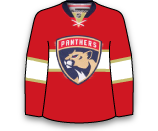Linus Ullmark left last night's game with a lower-body injury, so Johansson will get his first shot at the NHL-level. The 24-year-old, former third-round pick, has gone 13-3-3 with a 2.19 GAA and .925 SV% in 20 AHL games this season.

Linus Ullmark left last night's game with a lower-body injury, so Johansson will get his first shot at the NHL-level. The 24-year-old, former third-round pick, has gone 13-3-3 with a 2.19 GAA and .925 SV% in 20 AHL games this season.

Robinson, who is 6-foot-6 and 225 lbs, has scored 16 goals with 14 assists (30 points) in 40 AHL games this year. The heavyweight comes up to play in the Battle of Alberta later this week where there's bound to be some fireworks after the Zack Kassian/Matthew Tkachuk altercation a few weeks ago. Robinson has one goal and one assist in seven career NHL games.
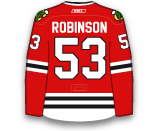
Hill was sent to Tucson during the Coyotes' bye week but returns to the Coyotes with Darcy Kuemper still out. Hill has gone 2-2-1 with a 2.40 GAA and .920 SV% in nine games with Arizona this season.

Terry has been out since December 17th with a small fracture below his knee cap. Terry was originally expected to miss 10 weeks, so he made a speedy recovery. Terry absolutely lit it up during his conditioning stint, posting 10 points (3G / 7A) in seven games. The 22-year-old had eight points (3G / 5A) in 33 games with the Ducks before getting hurt.

De Leo made his season debut in Nashville on January 16th but was a healthy scratch the next night. The 24-year-old forward has 14 points (7G / 7A) in 33 AHL games this season.

Jones played in the last 14 games before the Ducks bye week, scoring just two goals, giving him seven points (5G / 2A) in 37 games on the season. Look for him to be back in his regular spot with Sam Steel and Ondrej Kase on Monday.

Gambrell hasn't played in an NHL game since December 17th but gets another shot with the Sharks after scoring three goals with nine assists (12 points) in 15 AHL games. The 23-year-old had six points (2G / 4A) in 30 NHL games before being sent down.

Suomela had one assist in 12:27 TOI in the last game before the Sharks bye week and has three assists in 11 games this year. During his 11 games with the Barracuda, the 25-year-old centre has seven points (4G / 3A).
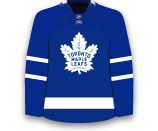
Kellman has played in 14 straight games with the Sharks, scoring one goal with one assist while averaging 9:22 TOI/gm. During his time with the Barracuda, the 25-year-old has four goals and 12 assists (16 points) in 25 games.
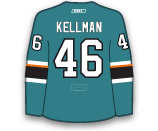
Gaudet spent the last two seasons with the Predators organization but has 13 points (2G / 11A) in 39 games in his first year with the Marlies. He is with the team in Nashville but it's unlikely that he'll make his Maple Leafs debut on Monday.
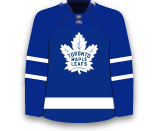
Trenin played in seven games before the bye week but was a healthy scratch in the last game. The 23-year-old has six points (2G / 4A) in 13 games with the Predators this season.

Sissons has been out with a lower-body injury since December 27th and spent the Predators' bye week on a conditioning stint with Milwaukee. Sissons just practiced with the team but did not play in a game. He skated as an extra in Sunday's practice, so don't expect him to be in the lineup on Monday.

Chlapik appeared in the last five games before the Senators' bye week, where he failed to record a point in 11:19 ATOI. With Ottawa getting back in action on Monday, Chlapik returns from Belleville, where he has 14 points (5G / 9A) in 24 games.
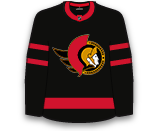
Batherson appeared in the last seven games before the Senators' bye week, scoring one goal with one assist while playing 16:02 ATOI. With Ottawa getting back in action on Monday, Batherson returns from Belleville, where he leads the team with 46 points (14G / 32A) in 37 games.

Cholowski has scored two goals with three assists (five points) in 17 games with the Griffins this season. Cholowski is expected to replace Mike Green, who is out with an upper-body injury. Cholowski has 24 points (9G / 15A) in 81 career NHL games.

Kampfer has been a healthy scratch for the last two games, so he'll go to the AHL to open up a roster spot for Jeremy Lauzon to come up.

Head coach Bruce Cassidy was frustrated with his blueline on Sunday, so it seems likely that Lauzon will draw into the lineup on Tuesday. Lauzon figures to replace Matt Grzelcyk and comes up with 13 points (1G / 12A) in 43 AHL games.

With Dominik Kahun out with a concussion, Blandisi returns to the NHL before the bye week. Blandisi has split his season between the AHL and NHL, posting five points (2G / 3A) in 21 NHL games and eight points (4G / 4A) in 16 AHL games.
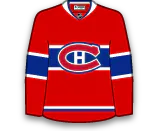
Vesalainen has scored nine goals with 13 assists (22 points) in 44 AHL games this season. The 2017 first-round pick has one assist in five career NHL games and could make his season debut on Tuesday with Adam Lowry out for at least one month.
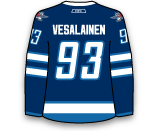
Michael Raffl is questionable to play Tuesday due to an upper-body injury, so Rubtsov could play in his fourth career NHL game. The 21-year-old has two goals and 10 assists (12 points) in 28 AHL games this season.
